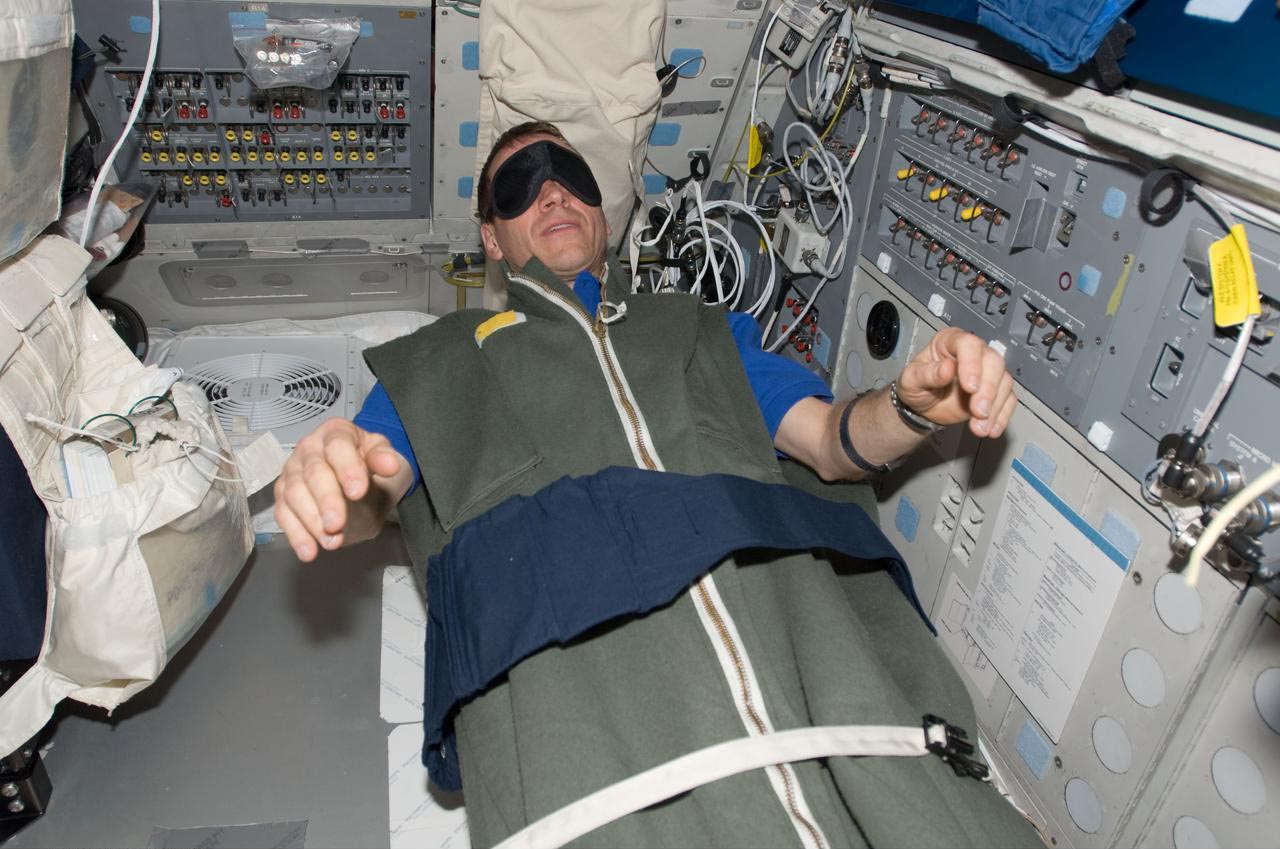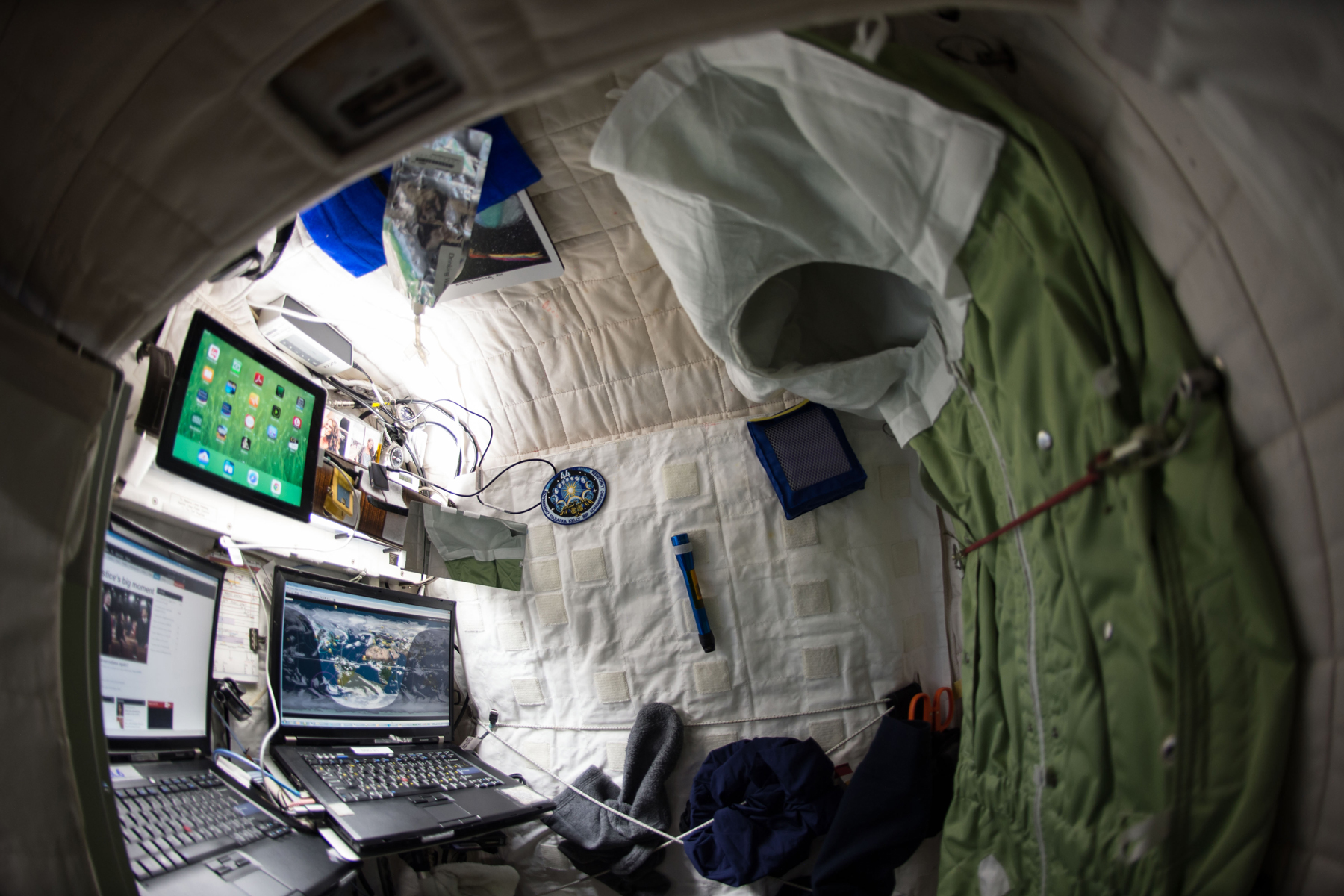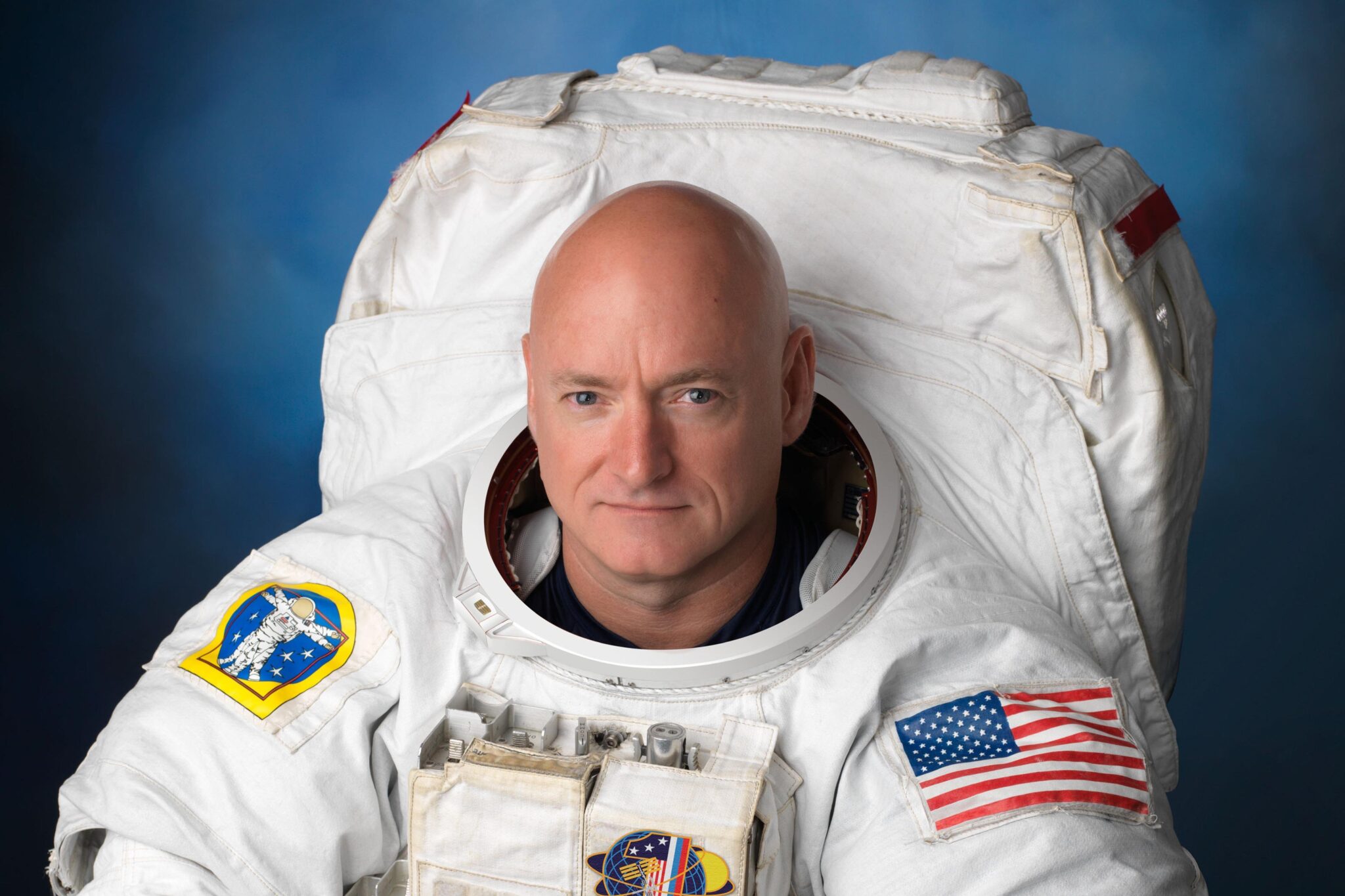In 1963, Gordon Cooper, during the 34-hour Mercury-Atlas-9 mission, became the first American astronaut to fall asleep in orbit. But how do astronauts sleep in space? Cosmic sleep is fraught with certain difficulties: it requires preparation and caution, which is vital in space. Lack of sleep can cause fatigue, which can lead to mistakes when performing important tasks. If a sleepy astronaut makes a mistake, it can put his life at mortal risk.

Dangers while sleeping in space
On the International Space Station (ISS), astronauts sleep in cabins the size of a telephone booth. Before going to bed, they necessarily climb into sleeping bags tied to the wall. If this is not done, then during sleep the astronaut may begin to “float” around the station at the risk of serious injury.
Veteran astronaut Scott Kelly spent 520 days on the ISS. In his interview, he talked about what it’s like to sleep in space. It was strange for Kelly to sleep without a covering blanket or a comfortable pillow to rest it head on.

“I came up with the idea of fixing my head to the pillow with Velcro. So it seemed to me that my head was lying on the pillow and it became easier to fall asleep. But during sleep there is a danger of suffocation. Without ventilation during sleep, astronauts lie motionless and a bubble of exhaled carbon dioxide begins to form near their heads. To avoid this, people have to sleep at the vent to avoid potential hypoxia. There is complete silence in space, and ventilation is noisy on the ISS. Therefore, we have to fall asleep in a rather noisy place. Therefore, astronauts have to contrive by wearing earplugs. Moreover, the sun in orbit is very bright and seeps through the blinds, so astronauts use face masks to protect themselves from sunlight,” notes Scott Kelly.

Astronauts note other troubles. Some were constantly having dreams and nightmares in space. Others snore heavily in space, preventing others from sleeping. At the same time, only 6 hours of the day are allocated for sleep, although NASA plans to expand this range to 8-8.5 hours.
Recall that earlier we explained how a person can survive hibernation in deep space.
Follow us on Twitter to get the most interesting space news in time
https://twitter.com/ust_magazine
